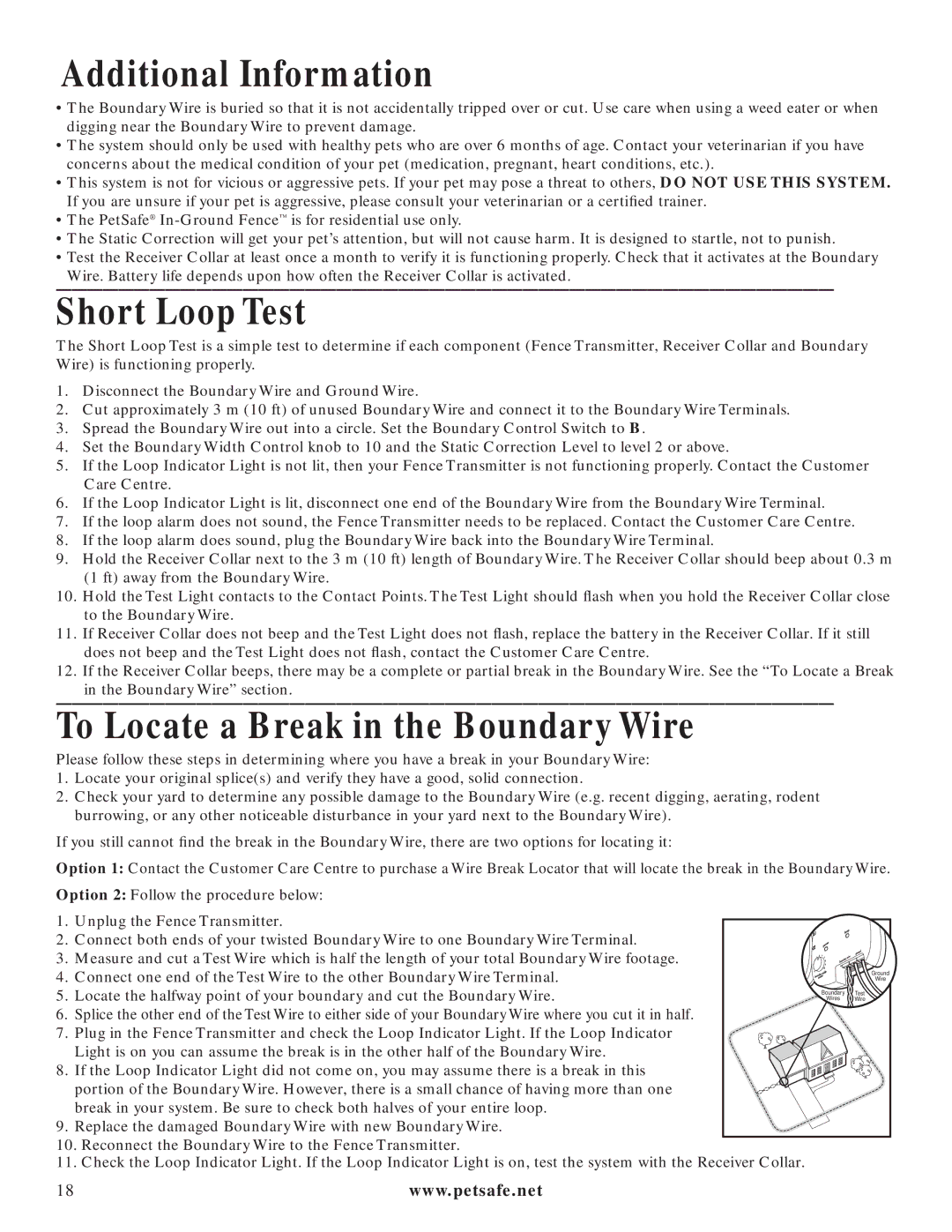PIG20-11041 specifications
The PetSafe PIG20-11041 is a state-of-the-art in-ground pet fence system designed for dog owners who value safety, freedom, and reliability. This system provides a secure boundary for your pets, allowing them to roam freely within a predetermined area while ensuring that they stay away from hazardous zones like roads or neighboring properties. The PetSafe PIG20-11041 is particularly known for its advanced technologies and customizable features.One of the standout features of the PetSafe PIG20-11041 is its adjustable collar. The collar is lightweight and designed for comfort, ensuring it fits snugly without causing irritation to your pet. It includes a built-in battery that is easy to replace, and the system typically features several levels of static correction. This allows you to customize the training intensity based on your dog's temperament and learning pace.
Another significant characteristic of the PetSafe PIG20-11041 is its compatibility with multiple dogs. The system can accommodate an unlimited number of pets with additional collars, providing a great solution for households with multiple furry companions. This flexibility is an excellent advantage for families that want to maintain consistent boundaries for all their pets.
The installation process of the PetSafe PIG20-11041 is designed to be user-friendly. The included steps allow pet owners to create a secure boundary by burying copper wire underground, enabling seamless integration with your yard. The system can cover up to 25 acres, making it ideal for larger properties, and the wire can be run in various configurations to suit the layout of your yard.
The PetSafe PIG20-11041 also incorporates a tone-only mode, which can be used during training sessions to help your dog learn the boundaries without any static correction. This feature is particularly beneficial for younger or more sensitive dogs, as it allows them to acclimate to the system in a more gentle manner.
Durability is another defining characteristic of the PetSafe PIG20-11041. The system is built to withstand various weather conditions, ensuring that it remains functional and reliable over time. Moreover, the collar is waterproof, allowing your pets to enjoy outdoor activities without fear of damaging the containment system.
In summary, the PetSafe PIG20-11041 is a comprehensive in-ground pet containment system that prioritizes safety and flexibility. With its adjustable collar, multi-pet compatibility, straightforward installation, and durable design, it represents a smart investment for pet owners who want to provide their dogs with the freedom to enjoy their surroundings while maintaining secure boundaries.

